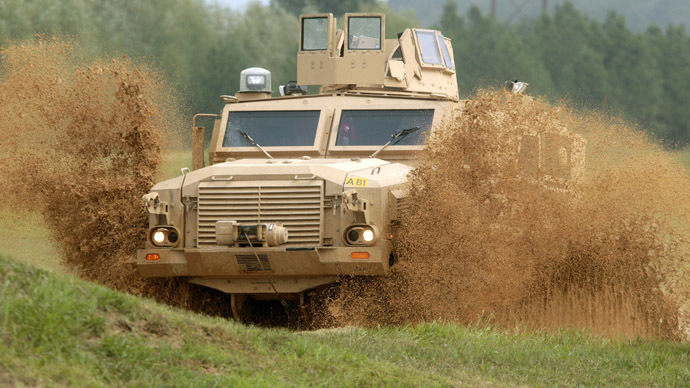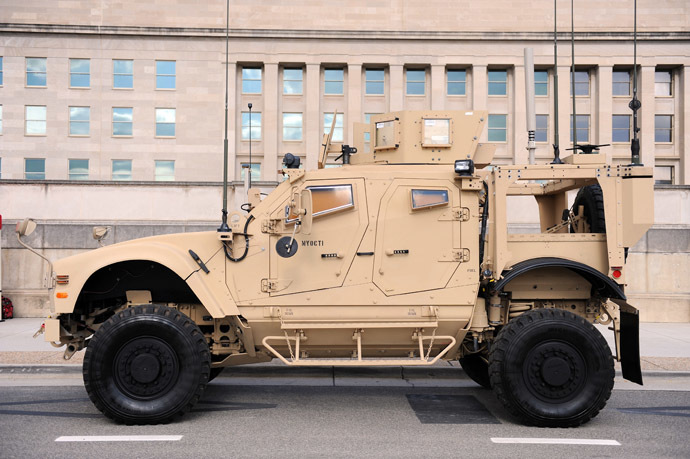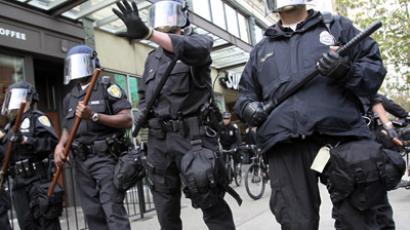Military hand-me-downs: US police getting leftover armored trucks from Iraq

The US military is handing over leftover equipment from the Iraq conflict to police under a military surplus program. Civil liberties groups have criticized the initiative as unnecessary and a move toward the militarization of American law enforcement.
American law enforcement agencies have received 165 MRAPs – 18
ton, armored vehicles with gun turrets – this year, according to
an AP investigation. Military officials say police have filed
requests for 731 more, but none are available.
“It’s armored. It’s heavy. It’s intimidating. And it’s
free,” Craig Apple, the sheriff of Albany County, told AP.
Each of the hulking military vehicles costs around $500,000, and
before the MRAPs can be used by law enforcement agencies they
have to be refitted for civilian use. Even after retro-fitting,
the vehicles are still limited. Because of their size, the
vehicles are unable to cross some bridges and travel on narrow
roads.
The investigation revealed that some of the MRAPs have already
been put to use. In the city of Boise, Idaho, police deployed the
vehicle because they suspected a suspect was in possession of
heavy firearms and explosives. In Nampa, police used their MRAP
to protect officers from a potential explosion.
The distribution of the armored military vehicles to police
forces has prompted strong opposition from US rights groups. The
American Civil Liberties Union (ACLU) has attacked the military
surplus program, branding it a move to militarize law
enforcement.

“One of our concerns with this is it has a tendency to
escalate violence,” ACLU Center for Justice senior counsel
Kara Dansky told AP. The ACLU has been investigating the use of
military equipment in US police forces since 2012 as part of
their campaign against the militarization of law enforcement
under the slogan: “Towns don’t need tanks.”
On its website, the NGO records examples of occasions when police
have used military equipment in situations when it was
unnecessary, disproportionate or counterproductive.
In one such incident earlier this year, police in North Dakota
used a $154 million MQ-9 Predator B drone to arrest a family of
anti-government separatists who had refused to return six cows
who had wandered onto their property to their owners. Local
police borrowed the drone from the Department of Homeland
Security, the ACLU reported.
Apple, the Albany County sheriff, argued that the police force
was not becoming more militarized and was instead preparing
itself for every eventuality.
“Our problem is we have to make sure we are prepared to
respond to every type of crisis,” he said. For example, he
said, if SWAT teams need to get close to a shooter or protect
passers-by, a MRAP would be the vehicle for the job.
The ACLU argues that MRAPs might just be the tip of the iceberg,
as it is not known “how militarized the police have become,
and how extensively federal money is incentivizing this
trend.”














